Archive for October, 2015
EFIA at MUDE for the workshop “How to prepare and enrich your metadata with style”
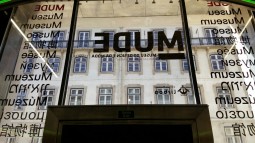
MUDE – Museo do design e da Moda in Lisbon, has hosted more than 20 representatives of European fashion museums and archives for a two days workshop, held last Monday and Tuesday.
Organised by Europeana Fashion International Association in the framework of the Europeana DSI project, the workshop aimed to train content providers on how to prepare and enrich metadata and how to improve their quality. Consisting of frontal lectures held by experts and professionals involved in the project, the workshop provided tips and best practices on how to create and harmonise richer metadata for online publication.
With the enthusiastic participation of many new partners, like Hasselt Fashion Museum, Rijksmuseum, Amsterdam Museum and Galleria del Costume di Firenze, plus some of the original partners as MoMu, Salvatore Ferragamo spa, Rossimoda and the National Museum in Berlin, the event has been also an occasion to present the future development of the Europeana Fashion initiative.
The Europeana Fashion International Association has presented in this occasion also the current status of content curation and exploitation of the Europena Fashion content on its social media channels, showing results and objectives for the forthcoming months and inviting all the partner institutions to collaborate in these activities.
The date of the next international meeting has been set in Spring 2016. Stay tuned on Europeana Fashion Blog for further details
Read more about marie antoinette comments sociology 101 breif look at weber, durkheim, marx & mill rating 0 no votes yet socialtags functionalism mile durkheim world wide web cnote uniform resource https://essayclick.net/ identifier structural functionalism c
From the Archive: Elizabeth Handley-Seymour

Read about the interesting story of this English dress maker’s sketches collected in Europeana Fashion!
Elizabeth Handley-Seymour was an English dress maker and fashion designer, who worked between the 1910s and the 1940s. She designed the dresses and gowns for the English Court and Society, including the wedding dress and the Coronation dress for the Duchess of York, later the Queen Elizabeth, the Queen Mother.

One of 4863 fashion designs by Madame Handley-Seymour, London, Spring 1926. Collection Victoria and Albert Museum, CC-BY-NC.
What is interesting about Madame Handley-Seymour wonderful sketches, collected in Europeana Fashion and provided by Victoria and Albert Museum, to which they were given by her daughter Mrs. Joyce Whitehouse, is not just that they offer a perspective on her work but also that they let us give a glance at what were the favourite Parisian designs of her time. This is because some of her sketches were designed after those of the Parisian couturiers, with their name accurately written beside the drawings, as it was common for London clientele to request copies of the creations of the most fashionable designers from Paris.

Madame Handley-Seymour after Balenciaga, Paris. White organdy dress with wide red leather corselet belt. London, Spring-Summer 1936. Collection Victoria and Albert Museum, CC-BY-NC.
Though it is not certified that Madame Handley Seymour actually realized the copies she sketched, it is sure that the business of copying was quite diffuse at that time. In fact those of Paris couturiers were considered to be the most avant-garde creations, with a great disadvantage to non-Paris based designers and dress makers. This custom has been also documented by American fashion designer Elizabeth Hawes, author of the book “Fashion is Spinach”, who started her career as a copyist replicating Paris designers’ creations for the American market.

Madame Handley-Seymour after Molyneux. Red evening dress with ruched front and self-fabric roses at bust and matching cloak. London, 1934-35. Collection Victoria and Albert Museum, CC-BY-NC.
However, what is actually left to us today, in over 4000 sketches by Elizabeth Handley-Seymour, is an accurate overview of the most desirable creations of her time, and through her wonderful illustrations we can have a look at the early creations of designers like Molyneux and Coco Chanel, and of the other less known designers who were the utmost desired of their time.
Find on Europeana Fashion Madame Handley-Seymour’s beautiful designs and illustrations: http://bit.ly/1WddGr6
Things to consider do you want new or used, do you want print or e-, do you try over there need the current edition or will the previous one do just fine, do you want to own the book or would a semester-long rental be adequate
An “Ode to Dutch Fashion” at Gemeentemuseum den Haag
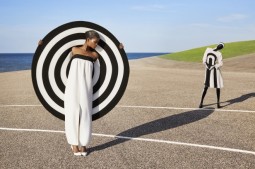
The first major exhibition on the history of Dutch fashion is presented at the Gemeentemuseum den Haag!
Until the 7th February 2015, the Gemeentemuseum den Haag hosts “Ode to Dutch Fashion”, showcasing the museum’s wide collection of Dutch designs to celebrate the country’s fashion and its innovators.

Frans Molenaar, Twee jurken en cape, geïnspireerd door eigen collectie 1976, zomer 2013 (95e show). Courtesy Frans Molenaar. Photo: Sabrina Bongiovanni. Art direction: Maarten Spruyt. Productie: Gemeentemuseum Den Haag.
In addition to the work of contemporary designers, the display features the pieces of the first Dutch fashion creators who worked under their own name and shows how fashion has developed in the Netherlands since the 20th century. Although many designers were already presenting their collections before, it was back in the Sixties when for the first time they came out with the own distinctive style, characterized by lots of black-and-white, a keen eye for line and shape, and also explosions of colour and idiosyncratic touches, that still influences Dutch fashion today.

Ensemble designed by Frans Molenaar in 1986. Collection Gemeentemuseum den Haag, via ModeMuze, all rights reserved.
In the colourful settings and installations that reflect the outstanding style of the country, this ode does not forget to sing about Jan Taminiau, Fong Leng, Frans Molenaar and Max Heymans, and of course about the worldwide known Dutch fashion designers like Viktor & Rolf and Iris Van Herpen.
To learn more about the exhibition, please visit Gemeentemuseum den Haag. Browse also the museum’s collection on Europeana Fashion!
Any half-way https://writemyessay4me.org/ decent class has a plot that is, an ordered sequence of lectures that, taken together, have some point
The Pocket Watch
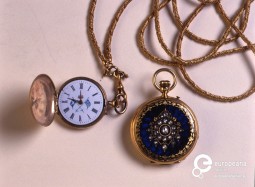
Ever since its development in 16th century to the World War I in 20th century, pocket watches represented an integral part of male fashion.
The history of pocket watches started in early late 1400s when German inventor Peter Henlein, thanks to the new innovation of the mainspring, was finally able to create watches that did not require falling weights as the source of their power. This invention gave birth to the first kind of small portable watches, which were in the beginning worn as a pendant on a chain around the neck. The first recorded wearable watch maker was Julien Coudray, who worked at the court of Louis XII of France.
In 1675 a new fashion emerged along with pocket watches that were small enough to be worn in pockets. The first to wear the watch this way was Charles II of England who popularized this fashion across entire Europe and North America. Then glass protection was introduced and pocket watches became luxury items, receiving many attention from fashion designers and innovators.
The only downside of the watches made before 1750s was their lack of accuracy, since they often lost several hours during one day. The introduction of lever escapement and minute handle changed that, enabling watches to lose just a minute or two during one day.
After 1820, levers became standard in manufacturing all clocks mechanics and in 1857 was created the first pocket watch with standardized parts. Powered with the industrial revolution and overflowing the public of Europe and Americas, this innovation enabled everyone to buy cheap, durable and accurate watches.
Its diffusion grew between 1880 and 1900, with the first attempts of standardizing time due to ever increasing need of precise time measurements in many scientific experiments and public transportation systems. Born as a masculine accessory, it became a common use object, since punctuality gets marked as a morally elevated thing, and, in the first years of 1900 women used to wear the watch “Cylindre Remontoir”. However, by the time of World War I, pocket watches went out of fashion after highly miniaturized wrist watches became famous.
Discover our selection of pocket watches on theme section on Europeana Fashion!
Register / login username or e-mail * password * create new account request new password related content ap biology chapter 12 summary campbell/reece click here for more info chapter 12 cell cycle ap bio chap 9 cell cycle
NEW CONTENTS AVAILABLE ON EUROPEANA FASHION!
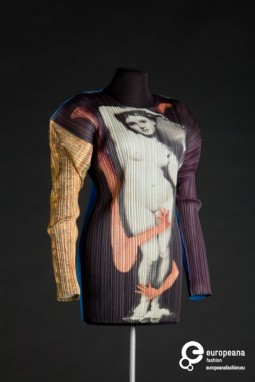
Modemuseum Hasselt and ITS International Talent Support digital collections are now free and available to browse through on Europeana Fashion!
Europeana Fashion database is now enriched by two new amazing and unique collections, those of the Hasselt Fashion Museum and ITS International Talent Support, which can be browsed through Europeana Fashion together whit the other over 700.000 digital records already available on the portal.
These two new collections will of course not only be appreciated by costume history passionate, but also by contemporary fashion lovers which can find in Hasselt Fashion Museum collection amazing pieces of the greatest designers like Raf Simons, Maison Martin Margiela, Issey Miyake. ITS International Talent Support collection, instead, offers the pictures and the records of the outstanding creations of emergent designers that took part to the worldwide known ITS contest!

Pleated blouse designed by Issey Miyake, F/W 1996-1997. Collection Modemuseum Hasselt, all rights reserved.

Design by ITS 2014 Vogue Talents Award For Accessories Winner Maiko Takeda. Collection ITS International Talent Support, all rights reserved.
So browse through Europeana Fashion to have a look at these new fantastic records!
Web development learning html, java and other programming languages are becoming increasingly https://justdomyhomework.com/ important in the workplace
“Liberty in Fashion” at Fashion and Textile Museum, London

The 140th anniversary of the iconic store is celebrated in London with an exhibition that shows the store’s distinctive textile prints and creations!
The exhibition “Liberty in Fashion”, held until the 28th of February 2016 at the Fashion and Textile Museum in London, is the first major Liberty retrospective of the 21st century, featuring more than 150 of the store’s ensemble and accessories.

Art Nouveau fashion using the Liberty print ‘Constantia’, 1961 – traditional prints were reinterpreted by a new generation of fashion designers. Photograph: © Liberty London.
The Liberty store, which can claim collaborations with William Morris and Dante Gabriel Rossetti, was founded in 1875 by Albert Liberty, and used to sell silks, cottons and fine wools imported from China, Japan and India. Its unique printed fabrics were also used by designers Yves Saint Laurent, Mary Quant and Vivienne Westwood in their collections, and the enduring relationship between Liberty and fashion designers also brought to collaborations with high profile brands like Nike.
In addition to the results of these collaborations, the exhibition also displays a wide selection of the store’s historic creations, including a cape from the 1890s constructed from Chinese shawls, a Paul Poiret silk robe from the 1930s and a late 1960s Macedonia print dress. Most of the pieces lent to the exhibition come from the famous Butterfields’ collection, which recently dressed also Eddie Redmayne for the 2016 film “The Danish Girl”.
To learn more about the exhibition, please visit the Fashion and Textile Museum. Browse also Europeana Fashion archive to find more creations by Liberty!
Read more about recommended site ap world history vocab chapter 7 comments pages 1 2 3 next last need help
“Fashion in an Age of Technology”
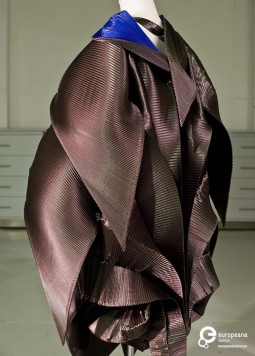
As announced this Tuesday, the Metropolitan Museum of Art new exhibition will explore the relationship between fashion and technology!
“Manus x Machina. Fashion in an Age of Technology” will be the next Costume Institute exhibition. It will focus on the dichotomy between handmade haute couture and machine-made fashion, a distinction that has become increasingly blurred in the years.

Iris Van Herpen, Autumn/Winter 2011 Couture collection. Photo Etienne Tordoir., collection Catwalkpictures, all rights reserved.
This distinction between haute couture and prêt-à-porter, as explains Andrew Bolton, the curator of the Costume Institute, was traditionally based on the handmade and the machine-made, but is now less clear since both disciplines have embraced the practices and techniques of the other.

Dress designed by Issey Miyake, Autumn/Winter 1999. Photo by Luísa Ferreira, collection MUDE - Museu do Design e da Moda, all rights reserved.
In the exhibition, the theme will be analysed by featuring more than one hundred pieces of fashion, both haute couture and ready-to-wear, including the designs by Alexander McQueen, Hubert de Givenchy, Coco Chanel, Issey Miyake and Raf Simons, covering over 130 years history. In addition, the exhibition will have several “in process” workshops to let the public know how these technologies work.
The exhibition will be open to the public on 5th May 2016. Until then, have a look at Europeana Fashion couture curation on Tumblr and browse through Europeana Fashion archive to find more about the role of technology in fashion!
His mother took him have a peek at this web-site to grand rapids, where her parents were living
“Bellissima. Italy and High Fashion 1945 – 1968” at Villa Reale, Monza
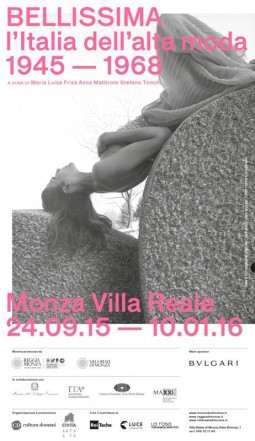
Italian High fashion is made of different and unique stories. These stories have been collected by curators Maria Luisa Frisa, Stefano Tonchi and Anna Mattriolo in the exhibition “Bellissima. The Italy of High Fashion 1948 – 1968” now held at Villa Reale in Monza until the 10th January 2016.

Gran Sera. “Bellissima. Italy and High Fashion 1945 – 1968” at Villa Reale, Monza. Photo by Caterina Cesaretti. All rights reserved.
The exhibition, that displays the models of Italian fashion creators like, among others, Jole Veneziani, Mila Schön, Germana Marrucelli, Emilio Schubert, Roberta di Camerino, Salvatore Ferragamo, Coppola e Toppo, Valentino and Roberto Capucci, tells of an early period of Italian fashion history when these first designers raised their voice to define what was going to be the internationally celebrated Italian Style.

Esotismi. “Bellissima. Italy and High Fashion 1945 – 1968” at Villa Reale, Monza. All rights reserved.
These stories are told through the exhibition from different perspectives, not only by displaying the designer’s creations, but also showing intimate pictures of them working in their ateliers, video interviews and reportages and the Italian magazines such as Linea Italiana or Bellezza in which their works were featured. In a long hallway of the palace is also installed the Textile Gallery, a project realized in collaboration with the Italian Ministry of Economic Development and Sistema Moda Italia, in which are exhibited sample books and textiles from the greatest textile makers of the time.
The exhibition will be on until the 10th of January 2016. For more information, please visit Villa Reale, Monza.
He was a member of the https://domyhomework.guru/ new york state legislature from 1797 until 1802, when he became a member of the u
Uniqlo discovers the Fashion Side of Neuroscience

Earlier this week, a Uniqlo shop in Sydney, Australia, presented to its customer a new technology called “UMood”. The technology implies neuroscience to help customers to find their the perfect T-Shirt.
It consists in a headset using a single sensor on the forehead to measure brain activity while people watch seconds-long video clips. Each clip represent up to 10 moods such as “dandy” and “stormy.”
The series of videos includes a woman reading in a forest, a kitten, cherry blossoms and a man dancing. Then an algorithm analyses each responses the customers’ brain had while their watching and the machine offers the t-shirt that in Uniqlo selection perfect fits their mood.
It is no wonder that in a time in which fashion and mass production push new designs almost every day, someone may feel confuse about what to buy and what to wear. But is technology the right solution to help customers accomplish their needs? Fashion still waits for the algorithm to calculate this answer.
Read also on Europeana Fashion how a technological catwalk can be sustainable by implying solar power!
Subject psychology rating 0 no votes yet tags neuroscience https://domyhomework.guru/ death mind behavior science emotions death anxiety attitude change social psychology fear psychology terror management theory law printer friendly maia regman mrs
Curation by Missoni on Tumblr!

This October, Europeana Fashion Tumblr features the pictures of the exhibition “MISSONI, L’ARTE, IL COLORE” held at MA*GA Museum in Gallarate!
“MISSONI, L’ARTE, IL COLORE” displays the creations of Missoni, the great Italian fashion House, in the city that the founders Rosita and Ottavio Missoni chose for their home and first knitwear atelier back in 1953. The exhibition curated by Luciano Caramel, Luca Missoni, Emma Zanella, hosted by the City of Gallarate and MA*GA in collaboration with Archivio Missoni, is open until November 15th.

“Le Forme della Moda” MISSONI, L’ARTE, IL COLORE, MA*GA Museum, Gallarate, 19th April – 15th November 2015. All rights reserved.
The exhibition is a great homage to the creativity of maison Missoni and its founders, Rosita and Ottavio Missoni, that, since the 50s, have created a unique style marked by their classic “put-together”. Their work can be seen as an example of the bond between fashion and art, a statement of an innovative approach towards fashion, in which colours, substance and form are bounded together by an astonishing balance.

“La Sala degli Arazzi” MISSONI, L’ARTE, IL COLORE, MA*GA Museum, Gallarate, 19th April – 15th November 2015. All rights reserved.
The exhibition also displays one hundred works of art by European artists that have been significant for the Missonis’ cultural, artistic and creative journey. Opening with the video installation by the artists Ali Kazma, the exhibition itinerary develops in four thematic sections, which describe the creative process of the Missonis, from their inspirations to the transformation of the substance.
Visit the Tumblr every day to find a new photo of the exhibition, and browse through Europeana Fashion collection to find more archive pictures from Missoni!
Well, https://college-homework-help.org/ it’s more like every student versus the professor, but that’s another story entirely









